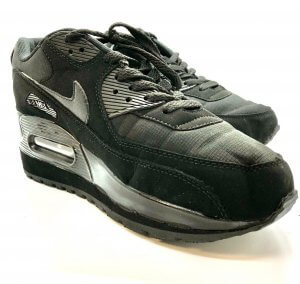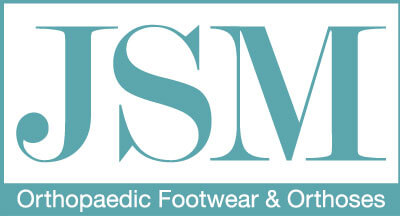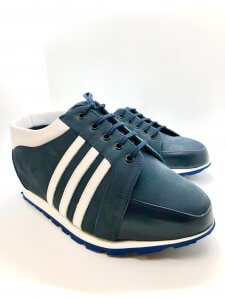Common foot problems causing painful feet
Achilles Tendinitis
Achilles tendinitis is a common condition that occurs when the large tendon that runs down the back of your lower leg becomes irritated and inflamed
Bunions (Hallux Valgus)
A bunion is a painful bony bump that develops on the inside of the foot at the big toe joint. Bunions are often referred to as hallux valgus. Bunions develop slowly. Pressure on the big toe joint causes the big toe to lean toward the second toe. Over time, the normal structure of the bone changes, resulting in the bunion bump. This deformity will gradually increase and may make it painful to wear shoes or walk
Claw Toe
claw toe also is often the result of nerve damage caused by diseases like diabetes or alcoholism, which can weaken the muscles in your foot. Having claw toe means your toes “claw,” digging down into the soles of your shoes and creating painful calluses.
Flat Foot or Fallen Arches
Flat feet, or “fallen arches”, are where your feet press flat on the ground. They’re common and usually nothing to worry about.
Adult Acquired Flatfoot
A variety of foot problems can lead to adult acquired flatfoot deformity (AAFD), a condition that results in a fallen arch with the foot pointed outward.
Most people — no matter what the cause of their flatfoot — can be helped with orthotics, braces and physical therapy. In patients who have tried these treatments without any relief, surgery can be a very effective way to help with the pain and deformity.
Flexible Flatfoot in Children
When a child with flexible flatfoot stands, the arch of the foot disappears. Upon sitting or when the child is on tiptoes, the arch reappears. Although called “flexible flatfoot,” this condition always affects both feet.
Flexible flatfoot is common in children. While parents often worry that an abnormally low or absent arch in a child’s foot will lead to permanent deformity or disability, most children eventually outgrow flexible flatfoot without developing any problems in adulthood. The condition is usually painless and does not interfere with walking or participation in sports. If your child’s flexible flatfoot does not cause pain or discomfort, no treatment is needed
Lymphoedema
The shoes pictured here were made for Naomi, 21, who has lymphodema. Naomi has an active lifestyle and wears these when playing netball. We have been making Naomi’s shoes for 17 years.
Lymphoedema is a long-term (chronic) condition that causes swelling in the body’s tissues. It can affect any part of the body, but usually develops in the arms or legs.
It develops when the lymphatic system doesn’t work properly. The lymphatic system is a network of channels and glands throughout the body that helps fight infection and remove excess fluid.
It is important that lymphoedema is identified and treated as soon as possible. If it isn’t treated, it can get worse.
Post-Tib Tendonitis
Post-Tib Tendonitis is a strain placed on the posterior tibial tendon. The posterior tibial tendon runs along the inside of the ankle and the foot. When there is post-tibial tendon disfunction, the tendon does not function to hold up the arch, resulting in flat feet. This can lead to heel pain, arch pain, plantar fasciitis and/or heel spurs. With post-tib tendonitis, pain will be more severe upon weight bearing, especially while walking or running.
Conservative treatments (non-surgical treatments) include wearing a foot orthotic with rearfoot posting and longitudinal arch support to reduce strain on the post tibial tendon and prevent excessive stretching of the plantar fascia.
Ankle Inversion
Inversion (lateral) ankle sprain. The most common type of ankle sprain occurs when the foot is inverted too much, affecting the lateral side of the foot.
Calluses
A callus is an area of thickened skin that forms as a response to repeated friction, pressure, or other irritation. Since repeated contact is required, calluses are most often found on feet because of frequent walking and poorly fitting footwear.
Diabetic Foot Conditions
Having diabetes means you’re at much greater risk of developing foot problems.
This is because raised blood glucose, also known as blood sugar, can damage the sensation in your feet.
It can also affect your circulation, which can mean blood can’t flow around your body properly, especially to your feet. Without a good blood supply, you may have problems with cuts and sores healing
Foot Pronation or Supination
Pronation is a natural motion of your foot during walking and running. Your gait can show a pattern of neutral pronation, overpronation, or supination (under pronation). The stresses of overpronating or supinating have been linked to a greater risk of injuries. Motion control shoes and orthotics may be recommended if you are an overpronator, while flexible and cushioned shoes are better for people who supinate. Learn about these gait patterns and what you can do to correct them.
Mallet Toe / Hammer Toe
Hammer toe and mallet toe are foot deformities that occur due to an imbalance in the muscles, tendons or ligaments that normally hold the toe straight. The type of shoes you wear, foot structure, trauma and certain disease processes can contribute to the development of these deformities.
A hammertoe has an abnormal bend in the middle joint of a toe. Mallet toe affects the joint nearest the toenail. Hammertoe and mallet toe usually occur in your second, third and fourth toes.
Relieving the pain and pressure of hammertoe and mallet toe may involve changing your footwear and wearing shoe inserts
Sesamoiditis
Sesamoiditis occurs when the tendons attached to sesamoids become inflamed.
The kneecap or patella is the largest sesamoid in your body. There are two more, much smaller sesamoids on the bottom of your foot near the big toe. Sesamoiditis usually refers to inflammation of the tendons in the foot, not the knee. Inflammation of the two tendons attached to the patella — patellar tendon and quadriceps tendon — is usually categorized as tendinitis.
Orthotics, such as padded insoles for your shoes, may be beneficial.
Arch Pain / Strain
Plantar fasciitis is the most common cause of arch pain and one of the most common orthopaedic complaints reported. It’s caused by inflammation, overuse, or injury to the plantar fascia. Pain is typically worse upon awakening and becomes more painful after prolonged standing or activities where you’re on your feet.
Charcot-Marie-Tooth (CMT)
Charcot-Marie-Tooth disease (CMT) is a group of inherited conditions that damage the peripheral nerves. It’s also known as hereditary motor and sensory neuropathy (HMSN) or peroneal muscular atrophy (PMA).
Drop Foot
Also known as Foot drop is a gait abnormality in which the dropping of the forefoot happens due to weakness, irritation or damage to the common fibular nerve including the sciatic nerve, or paralysis of the muscles in the anterior portion of the lower leg. It is usually a symptom of a greater problem, not a disease in itself
Leg Length Discrepancy (LLD)
 Here at JSM we are constantly striving to find ways to adapt any and all footwear. Nike Air trainer have previously been a shoe we could not raise but our technician has now perfected the process and we are please to able to offer this service to everyone.
Here at JSM we are constantly striving to find ways to adapt any and all footwear. Nike Air trainer have previously been a shoe we could not raise but our technician has now perfected the process and we are please to able to offer this service to everyone.
Leg length discrepancy is a difference between the lengths of the legs.
A discrepancy in leg length will usually become obvious to parents as they watch their child grow and begin to crawl and walk. Some children are born with legs of different lengths. In other cases, illness or injury causes a discrepancy in length to develop over time. While a slight difference in leg length may not cause symptoms, a significant difference can cause a noticeable limp and make it difficult for a child to run and play.
Treatment for a discrepancy depends upon the severity. In many cases, a minor difference in leg length can be evened out by wearing a lift in one shoe. A child with a more significant difference, however, may benefit from surgery to make his or her legs the same length. This can be done a number of ways, but is most often accomplished through a procedure that slows or stops growth in the longer leg.
Plantar Fasciitis
Plantar fasciitis is one of the most common causes of heel pain. It involves inflammation of a thick band of tissue that runs across the bottom of your foot and connects your heel bone to your toes (plantar fascia).
Plantar fasciitis commonly causes stabbing pain that usually occurs with your first steps in the morning. As you get up and move more, the pain normally decreases, but it might return after long periods of standing or after rising from sitting
Talipes (Club Foot)
Talipes describes a range of conditions where your baby is born with his feet turned in. There are three types of talipes:
Positional talipes, when a baby has been cramped in the womb (uterus) and his feet are turned in, due to lack of space.
Congenital talipes equinovarus (CTE), also known as club foot, when a baby’s feet and ankles are bent because he’s grown that way.
Syndromic talipes, where a baby has CTE that is associated with another congenital condition.

